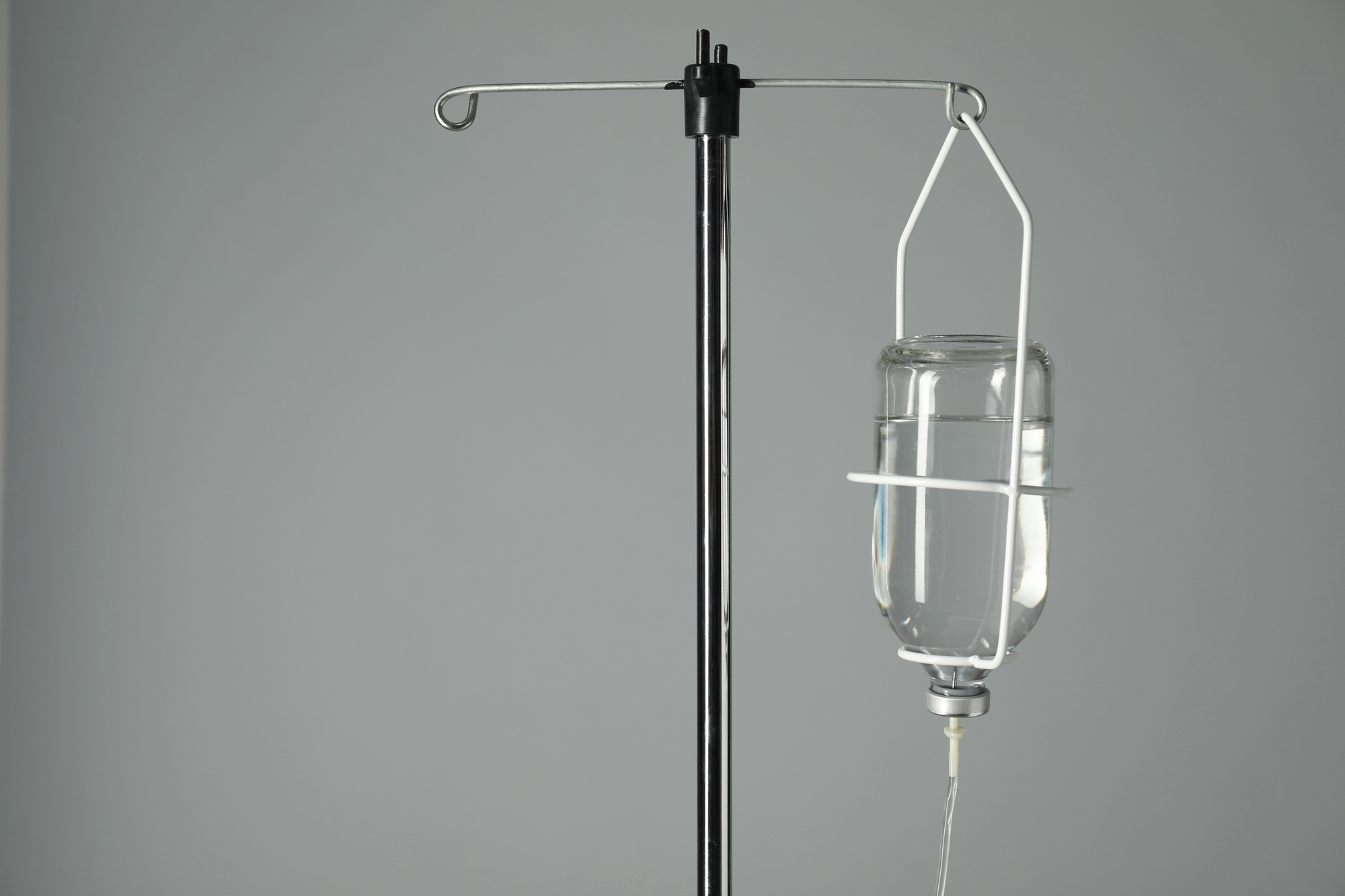Puerto Rico’s coastal regions may be known for their tropical beaches, but its mountain areas, such as Adjuntas, Jayuya, Utuado, and Maricao, present unique environmental challenges. The combination of elevation shifts, dense humidity, and fluctuating temperatures can significantly impact hydration, energy levels, and overall wellness.
For locals and travelers exploring these lush, high-altitude zones, IV therapy offers a direct, effective way to balance fluids, electrolytes, and nutrients, helping the body adapt to changing conditions and avoid fatigue or dehydration.
Altitude and Humidity: The Hidden Stressors on the Body
While Puerto Rico’s mountains don’t reach the extreme elevations of the Rockies or Andes, even moderate altitude changes, rising from sea level to 3,000 feet, can influence how the body retains oxygen and fluids.
As altitude increases, air pressure and oxygen levels drop slightly, which can cause mild symptoms like fatigue, dizziness, or shortness of breath in sensitive individuals. Simultaneously, high humidity prevents efficient sweating, reducing the body’s ability to regulate temperature and expel heat.
This combination often leads to what experts call “altitude-humidity imbalance”, a state where the body loses electrolytes but doesn’t feel noticeably dehydrated. That’s why hikers, cyclists, and outdoor workers in Puerto Rico’s mountain areas may underestimate their hydration needs until symptoms appear.
Common Hydration Challenges in Puerto Rico’s Mountain Areas
Puerto Rico’s central mountain range, the Cordillera Central, presents a mix of microclimates that can challenge even seasoned athletes and outdoor enthusiasts. Here’s how those conditions affect hydration and performance:
- High Humidity: In towns like Jayuya or Orocovis, humidity levels often exceed 90%, slowing sweat evaporation and causing internal heat buildup.
- Cooler Temperatures: While the cooler mountain air feels pleasant, it can mask thirst signals, leading to unintentional dehydration.
- Physical Exertion at Altitude: Hiking trails, coffee plantations, and eco-tourism adventures demand endurance, increasing electrolyte loss.
- Limited Access to Immediate Medical Care: In remote areas, rehydration options may be scarce, making IV therapy an efficient solution when available.
These factors make preventive hydration strategies essential, especially for outdoor workers, tourists, and athletes training in Puerto Rico’s interior regions.
Preventing Dehydration and Fatigue in Mountain Environments
While IV therapy offers a powerful recovery solution, prevention is still the most effective way to protect your body from dehydration—especially in mountain environments. Drivers, hikers, and outdoor workers can take proactive steps to stay ahead of fluid loss and avoid the fatigue, dizziness, and headaches that often come with altitude changes and physical exertion.
Maintaining consistent water intake is crucial. Rather than waiting until you feel thirsty, it’s best to schedule regular hydration breaks throughout the day to keep fluid levels stable. Avoiding excessive caffeine or alcohol is also important, as both can accelerate dehydration and worsen symptoms by increasing fluid loss through urination.
Choosing the right clothing can help regulate body temperature and reduce unnecessary sweating. Lightweight, breathable, and moisture-wicking fabrics are ideal for high-altitude or high-humidity environments, as they allow the body to cool efficiently without trapping heat.
Another practical way to monitor your hydration status is by paying attention to urine color. A pale yellow hue typically signals adequate hydration, while darker tones may indicate a need for more fluids. When engaging in prolonged outdoor activity—especially across altitudes—it’s also smart to incorporate electrolyte supplements. These support fluid balance and help prevent cramping, fatigue, and other signs of electrolyte depletion.
By following these simple strategies, individuals can significantly reduce the risk of dehydration and improve their overall performance and well-being in mountain settings. And when additional support is needed, IV therapy remains a reliable and fast-acting option to restore balance.
Research from institutions like the National Institutes of Health (NIH) and the Centers for Disease Control and Prevention (CDC) supports the importance of proactive hydration in humid and moderately elevated regions. Studies have shown that even slight fluid loss (1–2% of body weight) can impair physical and cognitive performance.
Moreover, humidity-driven sweat retention can lead to misjudged hydration status, emphasizing the need for balanced electrolytes rather than water alone. IV therapy’s ability to deliver this balance quickly is what makes it particularly valuable for tropical mountain settings like Puerto Rico’s.
Signs You Might Need IV Therapy for Mountain Hydration
When humidity and elevation changes start to affect your system, the body sends clear warning signs that it needs extra hydration and nutrient support.
You may notice persistent fatigue or low energy even after resting, headaches or lightheadedness, and muscle cramps or weakness during outdoor activities. Other symptoms can include dry mouth, low urine output, or excessive sweating, as well as difficulty recovering after hiking or long drives through mountainous terrain.
These indicators suggest that your body is struggling to maintain optimal fluid and electrolyte balance. An IV hydration session can help correct this quickly by replenishing essential nutrients and restoring your body’s energy, performance, and overall comfort.
How IV Therapy Helps with Altitude and Humidity Fluctuations
IV therapy delivers a blend of fluids, vitamins, and electrolytes directly into the bloodstream, allowing for rapid absorption and bypassing the digestive system. This method is especially effective in mountain environments, where lower oxygen levels and increased physical exertion can quickly lead to dehydration, fatigue, and imbalances in energy levels. By rehydrating the body and replenishing essential nutrients, IV therapy helps restore balance and improve overall wellness.
One of the primary benefits of IV hydration in elevated or humid conditions is its ability to restore lost fluids and electrolytes efficiently. After strenuous mountain hikes or long work shifts outdoors, the body can become depleted—making intravenous hydration a fast and effective solution for recovery. Certain ingredients commonly found in IV therapy, such as vitamin B12 and magnesium, also support better oxygen utilization and energy metabolism, which can be especially helpful when adjusting to higher altitudes.
In addition to boosting physical recovery, IV drips have been shown to ease mild altitude-related symptoms like tension headaches, fatigue, or lightheadedness. For travelers moving between drastically different climates—such as from the coast of San Juan to the higher elevations of Utuado—IV therapy can ease the body’s transition by helping it adapt to changes in humidity, oxygen levels, and physical demands.
Whether you're exploring mountain trails or adjusting to elevation shifts, IV hydration therapy offers a fast, targeted approach to staying energized, recovered, and ready for your next adventure.
Best IV Ingredients for Altitude and Humidity Balance
Not all IV drips are created equal. When addressing altitude and humidity stress, specific nutrients play a vital role in keeping the body balanced and energized:
- Electrolytes (Sodium, Potassium, Magnesium): Replace essential minerals lost through sweat and help regulate nerve and muscle function.
- Vitamin B Complex: Supports energy production and oxygen transport, reducing fatigue.
- Vitamin C and Zinc: Strengthen the immune system, which can weaken under physical stress and changing environments.
- Glutathione: A powerful antioxidant that combats oxidative stress caused by high humidity and sun exposure.
- IV Fluids (Normal Saline or Lactated Ringer’s): Restore hydration rapidly, ensuring cells receive adequate oxygen and nutrients.
By combining these ingredients, IV therapy in Puerto Rico provides a tailored approach to hydration and recovery, especially valuable for those adjusting to varying conditions.
Where IV Therapy Helps the Most in Puerto Rico’s Mountains
Some of the best-known mountain destinations in Puerto Rico also present the most intense hydration challenges, making IV therapy especially beneficial.
In Adjuntas and Jayuya, popular for coffee tours, hiking, and cooler climates, dehydration often goes unnoticed because the lower temperatures mask thirst cues. Utuado, known for its rivers and caves, demands physical exertion that can quickly deplete electrolytes during exploration. In Maricao, the combination of winding mountain roads and dense forest humidity causes drivers and cyclists to tire faster. Meanwhile, Aibonito and Barranquitas, two of Puerto Rico’s most elevated towns, experience sharp temperature shifts that disrupt fluid balance more rapidly.
Mobile IV Puerto Rico’s services that reach these regions make it convenient for both locals and visitors to receive effective hydration treatments without leaving their accommodations or resorts, ensuring recovery and comfort even in the island’s most rugged environments.
Ready to try IV Therapy?
At Mobile IV Puerto Rico, we provide safe, customized IV therapy treatments designed to help you stay hydrated, balanced, and refreshed, no matter where your adventure takes you. Whether you’re hiking in Jayuya, exploring Utuado’s caves, or relaxing in Maricao’s hills, our team delivers targeted IV hydration therapy directly to your doorstep. Book your IV Therapy session in Puerto Rico today and experience the difference of optimized altitude wellness.
Rehydrate. Recover. Recharge. With Mobile IV Puerto Rico, you can enjoy the island’s natural beauty while keeping your body at its best.





